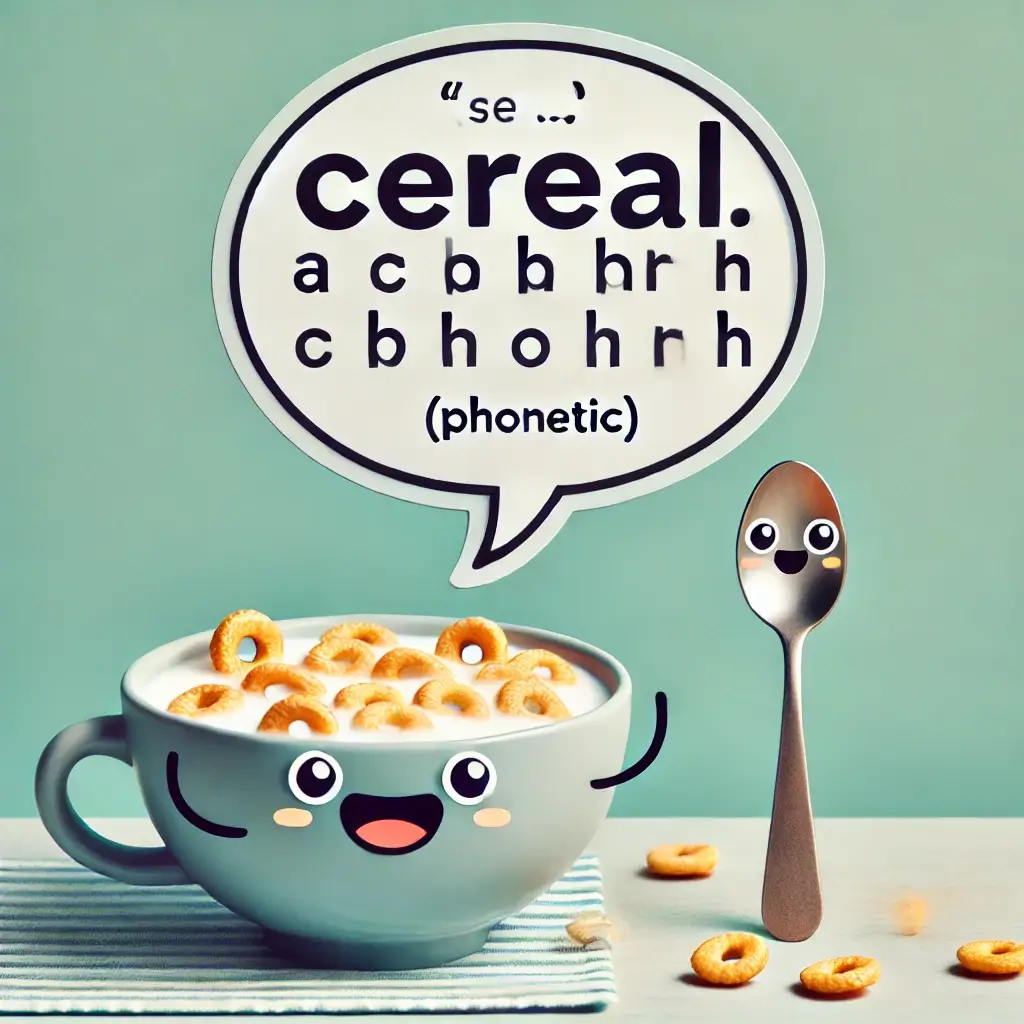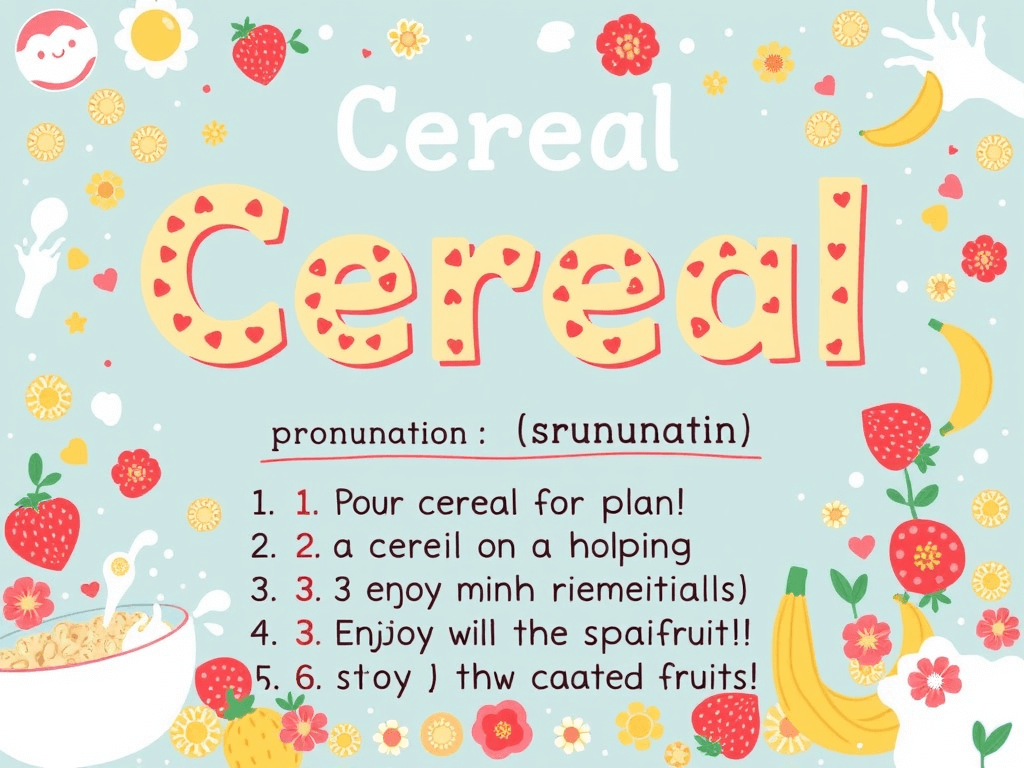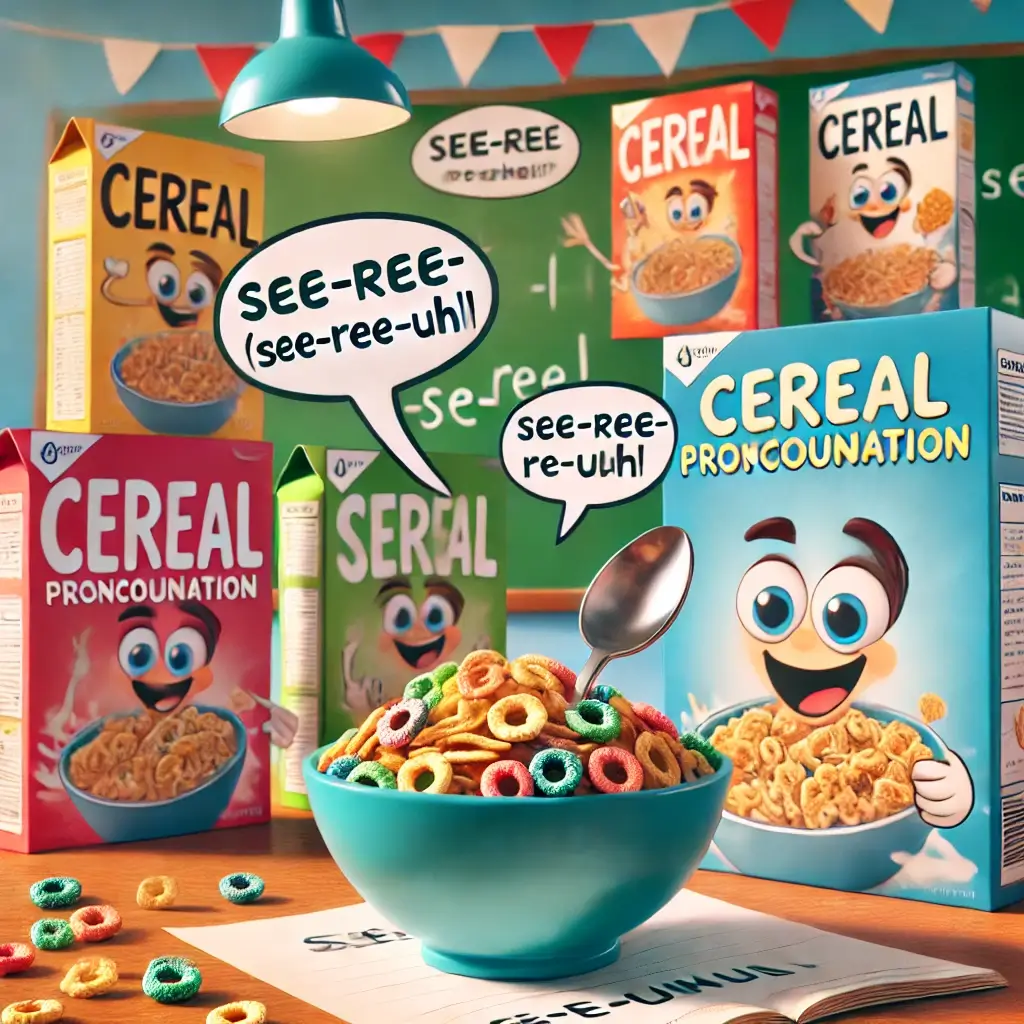Introduction
Have you ever wondered if you’re pronouncing “cereal” correctly? While it might seem like a straightforward word, pronunciation can vary based on accents, regions, and even cultural influences. Some say “seer-ee-uhl,” while others have slight variations depending on their native language and phonetic tendencies. This simple breakfast-related term has more linguistic depth than you might expect.
Pronunciation is more than just saying a word—it’s a reflection of history, language evolution, and even branding strategies. With globalization and social media, the way we say words can change over time, influenced by media, advertisements, and even memes.
In this article, we’ll explore the correct pronunciation of “cereal,” common mispronunciations, regional differences, and the impact of culture and linguistics. By the end, you’ll not only know how to pronounce it correctly but also understand why pronunciation can be such a fascinating topic of discussion.
Correct Pronunciation of “Cereal”
The correct cereal pronunciation follows a phonetic pattern that aligns with standard English pronunciation rules. The word “cereal” is typically pronounced as /ˈsɪə.ri.əl/ in American English and /ˈsɪə.rɪ.əl/ in British English. Both variations maintain a three-syllable structure, ensuring clarity in spoken communication.
However, minor pronunciation variations occur due to factors such as dialects, speed of speech, and emphasis on specific syllables. Many English learners struggle with cereal pronunciation because of the vowel sounds and the blending of syllables.
To correctly articulate “cereal”:
- Emphasize the first syllable (SEER).
- The second syllable should be softer (ee-uhl).
- Maintain a smooth transition between sounds to avoid slurring.
Even though there is a standard way to pronounce it, pronunciation can shift depending on cultural influences and personal speech habits.
Common Mispronunciations and Why They Happen
Mispronouncing cereal is common due to phonetic confusion and regional speech habits. Some of the frequent mispronunciations include:
- “Surreal” – Occurs when the “c” sound is softened.
- “Serial” – Phonetically identical but contextually different.
- “Serrial” – A mistake caused by misplacing syllabic stress.
Several factors contribute to these errors:
- Phonetic Similarity: The word closely resembles others, leading to confusion.
- Regional Dialects: Certain accents emphasize different syllables or vowels.
- Speech Speed: Rapid speech often alters pronunciation.
To minimize mispronunciations, speakers should practice enunciating each syllable clearly. Listening to native speakers and using phonetic guides also helps improve accuracy in cereal pronunciation.
Regional Differences in Pronouncing “Cereal”
Pronunciation can differ significantly based on geographic location. The variations in cereal pronunciation arise from historical linguistic influences, local dialects, and vowel shifts unique to different regions.
Key Regional Differences:
- United States: Typically pronounced as “SEER-ee-uhl,” with a smooth flow between syllables.
- United Kingdom: May feature a slightly clipped or softened second syllable, such as “SEER-ril.”
- Australia: Similar to British pronunciation, but with a tendency to slightly elongate the “ee” sound.
- Non-English Speaking Countries: Influenced by native phonetics, leading to variations in syllabic stress.
Understanding these differences provides insight into how pronunciation adapts to linguistic and cultural settings.
The Influence of Accents on Pronunciation
Accents significantly affect cereal pronunciation, altering syllable stress and vowel sounds. Regional and national accents shape how words are spoken, sometimes leading to misunderstandings or alternative pronunciations.
Accent-Based Variations:
- Southern U.S.: A more drawn-out vowel sound in the first syllable.
- New England: Tends to shorten vowel sounds, making it closer to “SEER-ril.”
- Irish English: Often softens the second syllable, producing “SEER-ee-uhl.”
Pronunciation differences caused by accents are natural and demonstrate the flexibility of language. Exposure to multiple accents can enhance comprehension and pronunciation accuracy.
Phonetics Behind the Word “Cereal”
Understanding cereal pronunciation requires analyzing its phonetic composition. The International Phonetic Alphabet (IPA) representation is /ˈsɪə.ri.əl/.
Breaking Down the Phonetics:
- /s/: Voiceless alveolar fricative.
- /ɪə/: A diphthong, blending “ih” and “uh” sounds.
- /r/: Alveolar approximant, varying slightly by accent.
- /i/: A short vowel sound, forming the second syllable.
- /əl/: A schwa sound ending with an “L.”
Pronouncing words correctly depends on mastering vowel shifts and consonant articulation. Phonetic awareness improves both speech clarity and comprehension.
Historical Evolution of the Word “Cereal”
The term cereal originates from the Latin word Cerealis, referring to grains and agricultural products. Over centuries, its pronunciation evolved through linguistic adaptation and phonetic shifts.
Key Historical Changes:
- Classical Latin: Pronounced as “KEH-reh-ahl-iss.”
- Old French Influence: Shifted to “SER-ee-ahl.”
- Modern English: Standardized as “SEER-ee-uhl.”
The evolution of cereal pronunciation showcases how language continuously adapts to societal and cultural transformations.
American vs. British Pronunciation Differences
Pronunciation differences between American and British English extend to words like cereal. The divergence primarily stems from phonetic shifts and regional speech patterns.
Comparative Differences:
- American English: “SEER-ee-uhl” (clear three-syllable enunciation).
- British English: “SEER-ril” or “SEER-ee-uhl” (more relaxed second syllable).
These variations emphasize the natural evolution of language across different dialects.
How Marketing and Branding Affect Pronunciation
Marketing strategies and brand names influence how people pronounce words. Companies often shape cereal pronunciation through advertising, slogans, and branding efforts.
Brand Influence on Pronunciation:
- Kellogg’s & General Mills: Reinforced the standard “SEER-ee-uhl” pronunciation.
- Regional Branding: Some local brands may slightly alter pronunciation based on audience.
- Advertising: Catchy jingles and slogans help establish phonetic norms.
Corporate branding plays a key role in maintaining consistent pronunciation across diverse consumer markets.
The Role of Pop Culture in Shaping Pronunciation
Pop culture has a strong impact on cereal pronunciation, influencing how words are spoken across generations. Movies, television, music, and celebrity endorsements all contribute to the way people articulate words. Animated characters in commercials often exaggerate pronunciation, which can lead to widespread adoption of non-standard variations.
Examples of Pop Culture Influence:
- TV Shows & Movies: Popular media introduces slang and unique pronunciations.
- Music & Lyrics: Artists may alter word pronunciation for rhyme or melody.
- Advertising Campaigns: Catchy slogans influence the way consumers say product names.
When a unique pronunciation becomes strongly associated with a beloved character or viral trend, it tends to stick, reinforcing specific phonetic patterns in everyday speech and influencing linguistic evolution over time.
Linguistic Perspectives on Pronouncing “Cereal”
Linguists analyze cereal pronunciation by studying phonetics, phonology, and sociolinguistics. These fields help explain why certain pronunciations dominate in specific regions and how speech patterns evolve.
Key Linguistic Considerations:
- Phonetic Structure: The way vowel and consonant sounds interact.
- Language Evolution: Words change over time due to cultural shifts.
- Speech Patterns: Differences in pronunciation based on dialect and exposure.
By understanding the linguistic background of cereal pronunciation, we gain insight into why variations exist and how pronunciation adapts across communities.
How Pronunciation Changes Over Time
Language is always evolving, and cereal pronunciation is no exception. Historical phonetic shifts, migration patterns, and technological advancements all contribute to how words transform.
Factors Affecting Pronunciation Changes:
- Generational Speech Patterns: Younger generations may modify pronunciation.
- Globalization: Exposure to multiple languages affects pronunciation trends.
- Technological Influence: Voice assistants and text-to-speech impact pronunciation habits.
Observing these changes provides valuable insights into how language develops over centuries, adapting to new social and technological contexts.
Influence of Social Media on Word Pronunciation
Social media platforms significantly impact cereal pronunciation, spreading pronunciation trends rapidly through viral content and memes. When influencers or celebrities pronounce a word in a certain way, their followers often adopt it.
Ways Social Media Influences Pronunciation:
- Meme Culture: Words and phrases become popular through internet trends.
- Viral Videos: Widespread pronunciation shifts occur through short-form content.
- Influencer Impact: Public figures shape linguistic norms through speech patterns.
Since social media is an ever-growing medium, it plays a continuous role in altering how words are spoken globally.
Why Some Words Are More Commonly Mispronounced
Certain words, including cereal, are mispronounced more often due to their phonetic structure, spelling irregularities, or regional influences. Words with silent letters, unusual syllable stress, or multiple acceptable pronunciations are particularly prone to mispronunciation.
Common Causes of Mispronunciation:
- Spelling vs. Sound: Some words are pronounced differently than their spelling suggests.
- Loanwords from Other Languages: Words borrowed from foreign languages retain non-standard pronunciation.
- Regional Dialects: Vowel shifts and accents contribute to variations in speech.
Recognizing these factors can help language learners and native speakers refine their pronunciation skills.
Fun Facts About the Word “Cereal”
Mastering cereal pronunciation and other words requires consistent practice, active listening, and frequent repetition. Using effective linguistic strategies, such as phonetic exercises, tongue twisters, and speech drills, can significantly enhance speech clarity, articulation, and overall confidence in communication skills.
Interesting Facts:
- Origin: “Cereal” comes from “Ceres,” the Roman goddess of agriculture.
- Homophones: “Cereal” and “Serial” sound identical but have distinct meanings.
- Marketing Influence: Major cereal brands have contributed to reinforcing a standard pronunciation.
These facts highlight the rich history and influence of this simple yet widely used word.
Tips for Improving Pronunciation Skills
Mastering cereal pronunciation and other words requires consistent practice, active listening, and frequent repetition. Using effective linguistic strategies, such as phonetic exercises, tongue twisters, and speech drills, can significantly enhance speech clarity, articulation, and overall confidence in communication skills.
Practical Pronunciation Tips:
- Listen to Native Speakers: Observe pronunciation in conversations and media.
- Use Phonetic Guides: Study IPA transcriptions for accurate articulation.
- Practice Repetition: Repeating words helps solidify correct pronunciation.
- Record Yourself: Playback recordings to analyze pronunciation patterns.
With consistent effort, anyone can refine their pronunciation skills and improve spoken communication.
FAQs:
Serial Pronunciation
The word “serial” is pronounced as /ˈsɪr.i.əl/ in American English. It has three syllables: SEER-ee-uhl. The stress is on the first syllable (SEER), and the last syllable is unstressed, making it sound softer. This pronunciation is used when referring to things in a sequence, like “serial number” or “serial killer.” The word is often confused with “cereal,” but they have different meanings. To pronounce it correctly, emphasize the “seer” sound at the beginning and let the last two syllables flow smoothly. Listening to native speakers can help with mastering the pronunciation.
Cereal Pronunciation in American English
In American English, “cereal” is pronounced as /ˈsɪr.i.əl/, which sounds like SEER-ee-uhl. The stress is on the first syllable (SEER), followed by a soft, unstressed ee-uhl sound. This word is commonly used to refer to breakfast grains like cornflakes or oatmeal. It is often confused with “serial,” but the context determines the meaning. To pronounce it correctly, start with “SEER,” then smoothly transition into “ee-uhl.” Practicing with online pronunciation tools or listening to native speakers can help in refining your pronunciation.
Cereal Pronunciation in British English
In British English, “cereal” is also pronounced as /ˈsɪə.ri.əl/ but may sound slightly different from American English. The first syllable “sɪə” can have a slightly longer vowel sound, making it closer to “SEER-ee-uhl” or “SIH-ree-uhl.” The pronunciation is almost the same as in American English, but some speakers might emphasize the middle vowel differently. It refers to breakfast food made from grains, such as wheat, oats, or corn. To practice the British pronunciation, listen to British speakers and notice the slight elongation in the first vowel sound.
Cereal Meaning
Cereal refers to grains such as wheat, oats, corn, or rice, often used as food. It is commonly associated with breakfast cereal, which includes processed grains eaten with milk. The word originates from Ceres, the Roman goddess of agriculture. Cereal grains are a staple in many diets worldwide, used in foods like bread, pasta, and porridge. Whole grains provide fiber, vitamins, and nutrients essential for health. The term “cereal” can also refer to plants that produce these grains. It is often confused with “serial,” but their meanings are entirely different.
Conclusion
The pronunciation of “cereal” may seem simple, but as we’ve explored, language is constantly evolving. From regional dialects to historical influences, multiple factors shape how people say certain words. Whether you pronounce it the standard “seer-ee-uhl” or have a slight variation based on your accent, the way we speak reflects our linguistic and cultural backgrounds.
Marketing, branding, and pop culture also play a role in shaping pronunciation, making language a dynamic and ever-changing entity. With social media further influencing how words are spoken and adopted across different regions, it’s no surprise that pronunciation debates continue to arise.
Understanding pronunciation differences not only helps in clear communication but also fosters an appreciation for language diversity. Next time you pour a bowl of cereal, you might just think about the fascinating journey behind the way we say this everyday word.

